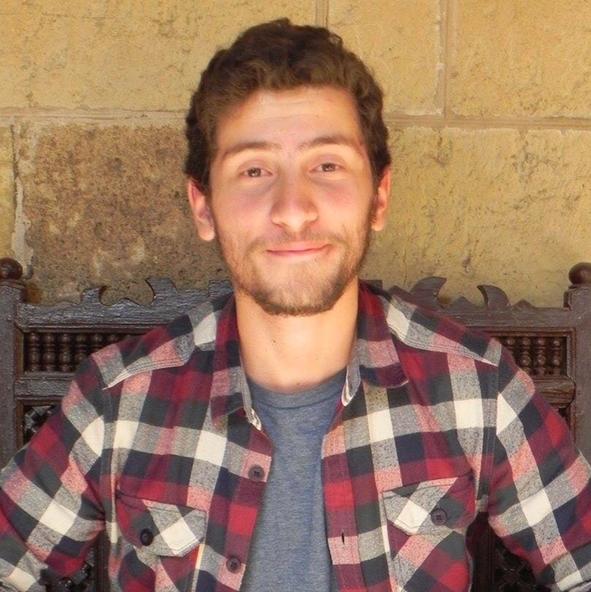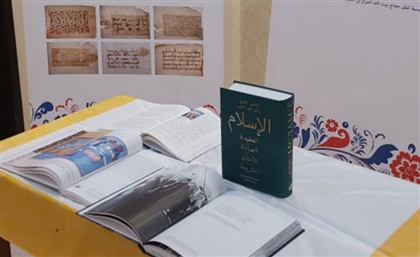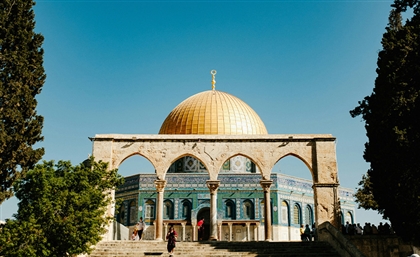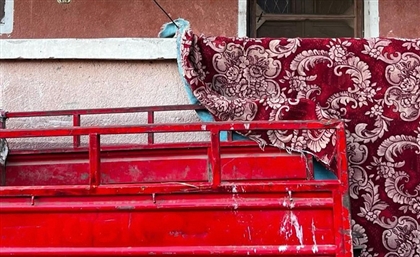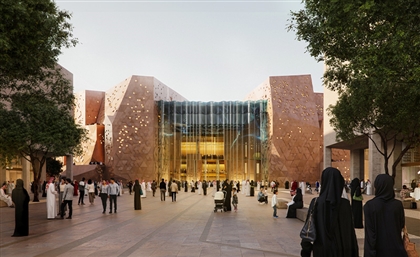This Project Visits Egypt's Architectural Past with Augmented Reality
From a deconstruction of a memorial in Alexandria to a reconstruction of the Shepheard’s Hotel in Cairo, these series of drawings by an architect in South Africa remodel Egypt’s modern era.
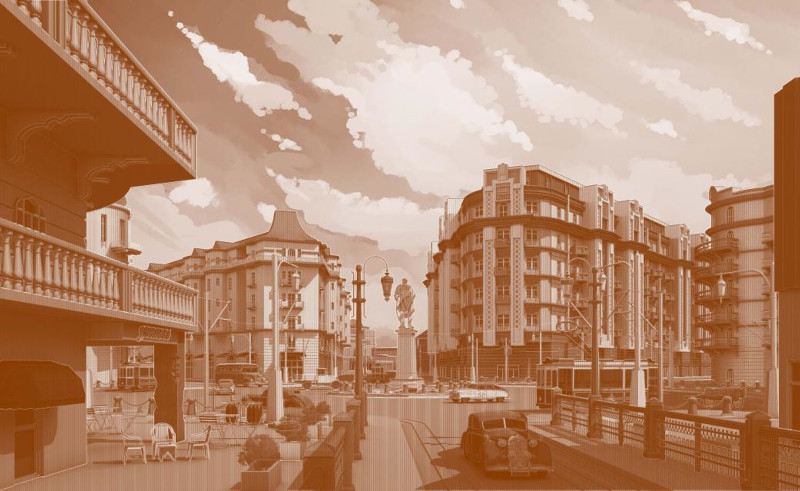
From time to time, we all look back at the past and wonder how it would be like to live through it. Unfortunately, time travel is yet to be a confirmed phenomenon, so we have to make do with augmented realities and maps. Kamal Ranchod, an architect in Johannesburg, South Africa, developed a thesis building on various research in cartography that remodeled certain periods of Egypt’s architectural history, with a focus on its modern era. Through a virtual map we get to step through the bustling streets of Belle Epoque Cairo in 1952 and when we look up, we’re back at Qaitbay fort in Alexandria, in 1882.
In ‘Phantoms of the Past’, Ranchod explores relics through a series of drawings that depict key events in Egyptian history. “I’ve always been intrigued to figure out how architecture can draw the invisible, tell stories and reconstruct memories,” Ranchod tells SceneHome. Beautifully intricate drawings ranging from an abstract deconstruction of the Unknown Naval Soldier Memorial in Alexandria, to an accurate reconstruction of the glamorous interiors of Shepheard’s Hotel in Cairo, which was destroyed in the Cairo fire of 1952, are wrapped together into perspectives that build new panoramic vistas.
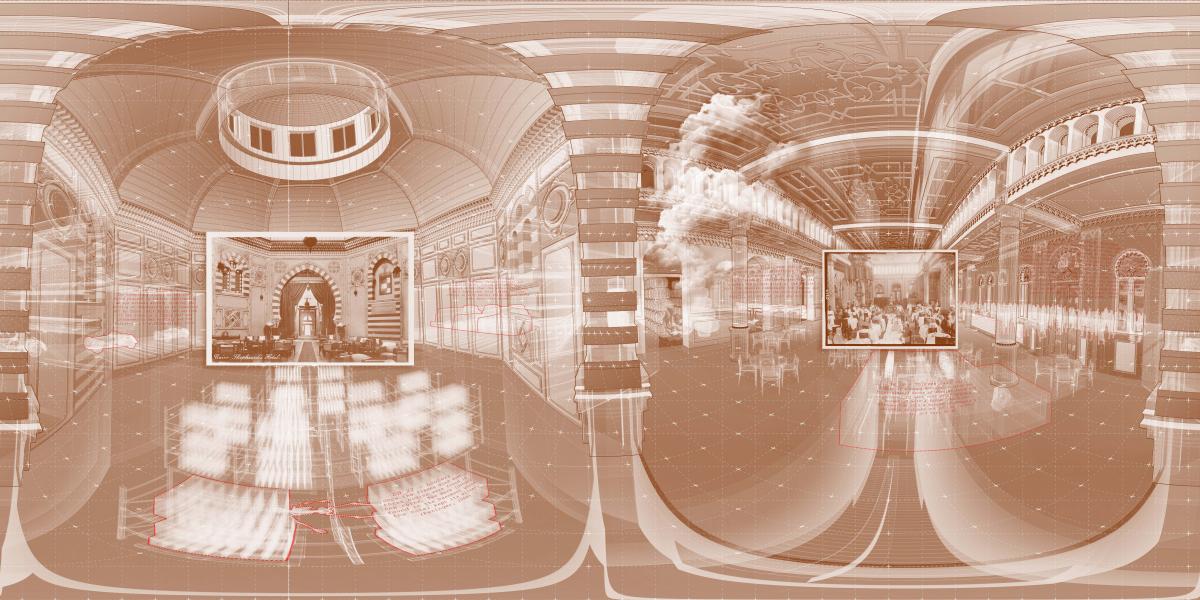
“These changing viewpoints question what we know by approaching an embodied experience,” Ranchod adds. In the virtual model, he recreated different scenes from naval battles off the shore of Alexandria to the streets of Cairo filled with cars and cafes, and then overlapped them. Allowing us to view them simultaneously, in a moment you’re looking at Belle Epoque Cairo and then the next moment you’re at Qaitbay fort in Alexandria, while the classic architectural elements of the memorial are sporadically spread out.
“I developed this to project the embedded history within spaces through an augmented, immersive video that bridges the realms of physical and digital space,” Ranchod says. His project allows you to occupy multiple perspectives across different time periods and then paradoxically tears them apart. In other words, time travel, visual and lucid time travel. “The drawings are not just illustrations of an incontestable past but they are also a form of rhetoric,” Ranchod adds. “Through them we challenge our ability to comprehend the past.”
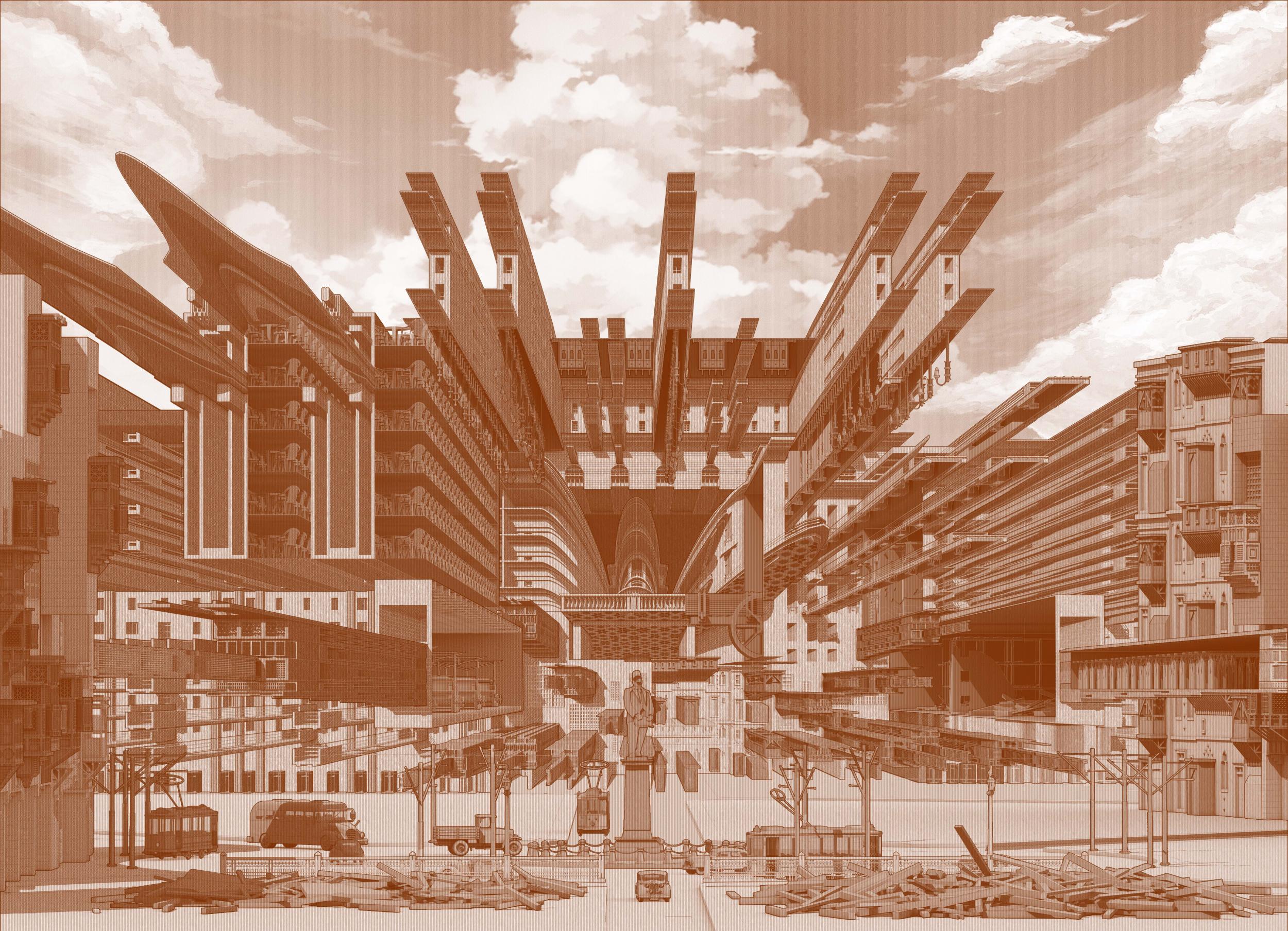
Traditionally, cartography has a paradigm which is that in a representation of a map, the observer is at a distance from the observed. Ranchod challenges this notion by eliminating fixed viewpoints and allowing the drawings to unfold as the viewer moves through them, engaging with a hybrid space made of layers of information that tell the story of how spaces change over time.
“I find architecture is a powerful tool of dialogue, creation and reflection,” Ranchod says. While he currently works as an architect, he will continue to develop further in the field of speculation and augmented realities. For now, we are stuck marveling at the reality bending visuals of the ‘Phantoms of the Past’.
- Previous Article Dr.Sisilove or How (Not) To Diffuse A Bomb
- Next Article Ministry of Environment to Double Recycling Centres by 2030



